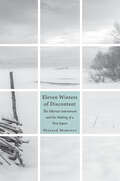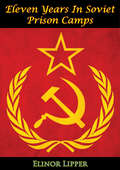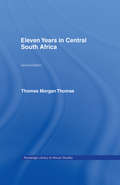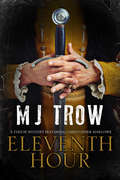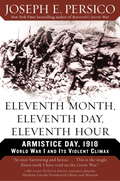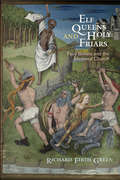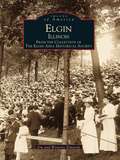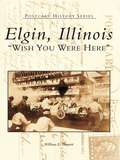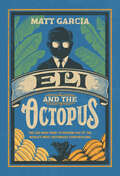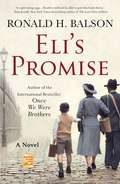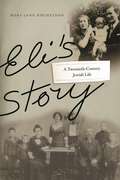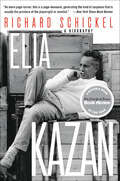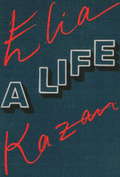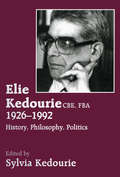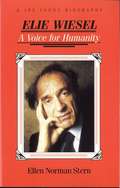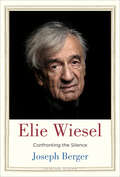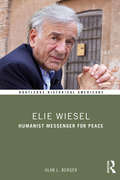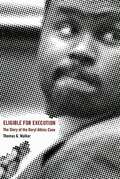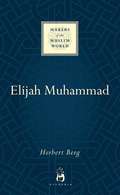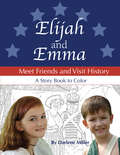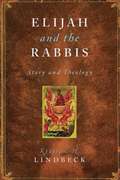- Table View
- List View
Eleven Winters of Discontent: The Siberian Internment and the Making of a New Japan
by Sherzod MuminovThe odyssey of 600,000 imperial Japanese soldiers incarcerated in Soviet labor camps after World War II and their fraught repatriation to postwar Japan. In August 1945 the Soviet Union seized the Japanese puppet state of Manchukuo and the colony of Southern Sakhalin, capturing more than 600,000 Japanese soldiers, who were transported to labor camps across the Soviet Union but primarily concentrated in Siberia and the Far East. Imprisonment came as a surprise to the soldiers, who thought they were being shipped home. The Japanese prisoners became a workforce for the rebuilding Soviets, as well as pawns in the Cold War. Alongside other Axis POWs, they did backbreaking jobs, from mining and logging to agriculture and construction. They were routinely subjected to “reeducation” glorifying the Soviet system and urging them to support the newly legalized Japanese Communist Party and to resist American influence in Japan upon repatriation. About 60,000 Japanese didn’t survive Siberia. The rest were sent home in waves, the last lingering in the camps until 1956. Already laid low by war and years of hard labor, returnees faced the final shock and alienation of an unrecognizable homeland, transformed after the demise of the imperial state. Sherzod Muminov draws on extensive Japanese, Russian, and English archives—including memoirs and survivor interviews—to piece together a portrait of life in Siberia and in Japan afterward. Eleven Winters of Discontent reveals the real people underneath facile tropes of the prisoner of war and expands our understanding of the Cold War front. Superpower confrontation played out in the Siberian camps as surely as it did in Berlin or the Bay of Pigs.
Eleven Years In Soviet Prison Camps
by Elinor LipperThe shocking and absorbing account of life in the hell of the Soviet Gulag system is told in all his horrific details here by Elinor Lipper."IN THIS BOOK I have described my personal experiences only to the extent that they were the characteristic experiences of a prisoner in the Soviet Union. For my concern is not primarily with the foreigners in Soviet camps; it is rather with the fate of all the peoples who have been subjugated by the Soviet regime, who were born in a Soviet Republic and cannot escape from it.The events I describe are the daily experiences of thousands or people in the Soviet Union. They are the findings of an involuntary expedition into an unknown land: the land of Soviet prisoners, of the guiltless damned. From that region I have brought back with me the silence of the Siberian graveyards, the deathly silence of those who have frozen, starved, or been beaten to death. This book is an attempt to make that silence speak."-from the Author's Preface.
Eleven Years in Central South Africa
by Thomas Morgan ThomasAn important surviving source for the study of the spectacular and short-lived kingdom of Ndebele. In the literature of pre-conquest Rhodesia, Thomas' book stands out by virtue of its ethnographical and political material about the Ndebele under Mzilikazi and Lebengula.
Eleventh Hour: A Tudor mystery featuring Christopher Marlowe (The Kit Marlowe Mysteries #8)
by M. J. TrowChristopher Marlowe plays the role of sleuth to discover who killed the queen&’s spymaster in this &“bawdy, witty . . . historically informed&” Elizabethan mystery (Kirkus Reviews). April, 1590. When the queen&’s spymaster, Sir Francis Walsingham, dies of a stroke, the sudden event leaves a dangerous power vacuum in her majesty&’s court. Walsingham&’s former right-hand man, Nicholas Faunt, believes he was poisoned. And he calls upon the poet and playwright Christopher &“Kit&” Marlowe to discover who killed him. To get to the bottom of this perplexing mystery, Kit must consult England&’s leading scientists and thinkers. But as he questions the members of the so-called School of Night, the playwright-turned-spy becomes convinced that at least one of them is hiding a deadly secret. If he is to outwit the most enquiring minds in Europe and unmask the killer within, Kit must devise an impossibly ingenious plan. Good thing he has a knack for formulating plots. &“As always, Trow provides fascinating period authenticity, a crackling plot, strong characters, and plenty of twists.&” —Booklist
Eleventh Month, Eleventh Day, Eleventh Hour: The War to End All Wars and Its Violent End
by Joseph E. PersicoThe story of the day on which World War I, the war to end all wars, ended. Using military archives and public records, along with journals and diaries, the book will weave together the eleventh hour experiences of the famous, such as Lloyd George, President Woodrow Wilson, Field Marshall Haig and General Pershing. But more dominantly, it will deal with the ordinary men in the trenches, unsung and unremembered, the British Tommies, French Poilus, American Doughboys and German Feldgrau. Where, for example, was the Austrian corporal, Adolf Hitler, on that day? Four days before the War's end, with peace talks already underway, the beaten Germans propose an interim ceasefire to spare lives. However, the French Allied Commander, General Ferdinand Foch, refuses. Hostilities will not cease, Foch insists, before the appointed hour of the Armistice. Thus, even on the last day, the Allies are still launching full scale offenses and both sides bombard each other until the final minute of the agreed ceasefire, 11am, November 11, 1918. The last hours pulsate with tension as men in the trenches, airmen in the sky and sailors at sea hope to escape the melancholy distinction of being the last to die in the War.
Elf Queens and Holy Friars: Fairy Beliefs and the Medieval Church (The Middle Ages Series)
by Richard Firth GreenIn Elf Queens and Holy Friars Richard Firth Green investigates an important aspect of medieval culture that has been largely ignored by modern literary scholarship: the omnipresent belief in fairyland.Taking as his starting point the assumption that the major cultural gulf in the Middle Ages was less between the wealthy and the poor than between the learned and the lay, Green explores the church's systematic demonization of fairies and infernalization of fairyland. He argues that when medieval preachers inveighed against the demons that they portrayed as threatening their flocks, they were in reality often waging war against fairy beliefs. The recognition that medieval demonology, and indeed pastoral theology, were packed with coded references to popular lore opens up a whole new avenue for the investigation of medieval vernacular culture.Elf Queens and Holy Friars offers a detailed account of the church's attempts to suppress or redirect belief in such things as fairy lovers, changelings, and alternative versions of the afterlife. That the church took these fairy beliefs so seriously suggests that they were ideologically loaded, and this fact makes a huge difference in the way we read medieval romance, the literary genre that treats them most explicitly. The war on fairy beliefs increased in intensity toward the end of the Middle Ages, becoming finally a significant factor in the witch-hunting of the Renaissance.
Elgin, Illinois: From the Collection of the Elgin Area Historical Society
by Jim Edwards Wynette EdwardsElgin was named by a city founder, James T. Gifford, after his favorite hymn. The city shares its name with 20 cities in 15 states and 8 countries. Elgin is situated on the banks of the Fox River, 35 milesnorthwest of Chicago, the city with which Elgin had thriving business exchanges in agricultural and industrial goods. The city's world-wide fame, for the most part, has come from its watch factory and Mr. Gail Borden's milk company. Pianos, shoes, books, and even chewing gum were also manufactured in Elgin and sold internationally. This exciting new study of a major Midwestern city is chock-full of images, many of which have never before been published. Featured in Elgin, Illinois is information about the Elgin National Watch Company, early circus and carnival attractions, as well as rip-roaring national road races. Highlighted in one chapter is Elgin's part in helping to win World War Iat home, complete with original photographs from the front in Europe. This lively and historical look at Elgin from the 1800s to the 1930s is interwoven with national and international trends and events.
Elgin, Illinois: Wish You Were Here
by William E. BennettElgin, Illinois, was founded in 1835. However, the community truly came into its own at the end of the Civil War, when the Elgin National Watch Company moved there and took the city name as its own. The name Elgin became synonymous with quality for over 100 years. Elgin, Illinois: "Wish You Were Here" tells the story of the town of Elgin during the 20th century, featuring vintage postcards of that period.Special events of historic interest include the tornado of 1920, and the Elgin Road Races, which gained national fame for a brief time around the World War I era. More than 200 pictures, culled from the collection of the Elgin Area Historical Society, and colorful narratives tell of the accomplishments by those first few generations who lived and died in the community.
Eli and the Octopus: The CEO Who Tried to Reform One of the World’s Most Notorious Corporations
by Matt GarciaThe poignant rise and fall of an idealistic immigrant who, as CEO of a major conglomerate, tried to change the way America did business before he himself was swallowed up by corporate corruption.At 8 a.m. on February 3, 1975, Eli Black leapt to his death from the 44th floor of Manhattan’s Pan Am building. The immigrant-turned-CEO of United Brands—formerly United Fruit, now Chiquita—Black seemed an embodiment of the American dream. United Brands was transformed under his leadership—from the “octopus,” a nickname that captured the corrupt power the company had held over Latin American governments, to “the most socially conscious company in the hemisphere,” according to a well-placed commentator. How did it all go wrong?Eli and the Octopus traces the rise and fall of an enigmatic business leader and his influence on the nascent project of corporate social responsibility. Born Menashe Elihu Blachowitz in Lublin, Poland, Black arrived in New York at the age of three and became a rabbi before entering the business world. Driven by the moral tenets of his faith, he charted a new course in industries known for poor treatment of workers, partnering with labor leaders like Cesar Chavez to improve conditions. But risky investments, economic recession, and a costly wave of natural disasters led Black away from the path of reform and toward corrupt backroom dealing.Now, two decades after Google’s embrace of “Don’t be evil” as its unofficial motto, debates about “ethical capitalism” are more heated than ever. Matt Garcia presents an unvarnished portrait of Black’s complicated legacy. Exploring the limits of corporate social responsibility on American life, Eli and the Octopus offers pointed lessons for those who hope to do good while doing business.
Eli's Promise: A Novel
by Ronald H. Balson"National Jewish Book Award winner Ron Balson returns triumphantly with Eli’s Promise, a captivating saga of the Holocaust and its aftermath spanning decades and continents. Readers will not be able to put this book down, but will turn the pages compulsively with heart in throat, eager to learn the fate of the Rosen family. Balson’s meticulous historical detail, vivid prose and unforgettable characters further solidify his place among the most esteemed writers of historical fiction today."—Pam Jenoff, New York Times Bestselling Author of The Lost Girls of Paris A "fixer" in a Polish town during World War II, his betrayal of a Jewish family, and a search for justice 25 years later—by the winner of the National Jewish Book Award.Eli's Promise is a masterful work of historical fiction spanning three eras—Nazi-occupied Poland, the American Zone of post-war Germany, and Chicago at the height of the Vietnam War. Award-winning author Ronald H. Balson explores the human cost of war, the mixed blessings of survival, and the enduring strength of family bonds.1939: Eli Rosen lives with his wife Esther and their young son in the Polish town of Lublin, where his family owns a construction company. As a consequence of the Nazi occupation, Eli’s company is Aryanized, appropriated and transferred to Maximilian Poleski—an unprincipled profiteer who peddles favors to Lublin’s subjugated residents. An uneasy alliance is formed; Poleski will keep the Rosen family safe if Eli will manage the business. Will Poleski honor his promise or will their relationship end in betrayal and tragedy?1946: Eli resides with his son in a displaced persons camp in Allied-occupied Germany hoping for a visa to America. His wife has been missing since the war. One man is sneaking around the camps selling illegal visas; might he know what has happened to her?1965: Eli rents a room in Albany Park, Chicago. He is on a mission. With patience, cunning, and relentless focus, he navigates unfamiliar streets and dangerous political backrooms, searching for the truth. Powerful and emotional, Ronald H. Balson's Eli's Promise is a rich, rewarding novel of World War II and a husband’s quest for justice.
Eli's Story: A Twentieth-Century Jewish Life
by Meri-Jane RochelsonEli’s Story: A Twentieth-Century Jewish Life is first and foremost a biography. Its subject is Eli G. Rochelson, MD (1907–1984), author Meri-Jane Rochelson’s father. At its core is Eli’s story in his own words, taken from an interview he did with his son, Burt Rochelson, in the mid-1970s. The book tells the story of a man whose life and memory spanned two world wars, several migrations, an educational odyssey, the massive disruption of the Holocaust, and finally, a frustrating yet ultimately successful effort to restore his professional credentials and identity, as well as reestablish family life. Eli’s Story contains a mostly chronological narration that embeds the story in the context of further research. It begins with Eli’s earliest memories of childhood in Kovno and ends with his death, his legacy, and the author’s own unanswered questions that are as much a part of Eli’s story as his own words. The narrative is illuminated and expanded through Eli’s personal archive of papers, letters, and photographs, as well as research in institutional archives, libraries, and personal interviews. Rochelson covers Eli’s family’s relocation to southern Russia; his education, military service, and first marriage after he returned to Kovno; his and his family’s experiences in the Dachau, Stutthof, and Auschwitz concentration camps—including the deaths of his wife and child; his postwar experience in the Landsberg Displaced Persons (DP) camp, and his immigration to the United States, where he determinedly restored his medical credentials and started a new family. Rochelson recognizes that both the effort of reconstructing events and the reality of having personal accounts that confirm and also differ from each other in detail, make the process of gap-filling itself a kind of fiction—an attempt to shape the incompleteness that is inherent to the story. In the epilogue, the author reminds readers that the stories of lives don’t have clear chronologies. They go off in many directions, and in some ways they never end. An earlier reviewer said of the book, "Eli’s Story combines the care of a scholar with the care of a daughter." Both scholars and general readers interested in Holocaust narratives will be moved by this monograph.
Elia Kazan: A Biography
by Richard Schickel“No mere page-turner, this is a page-devourer, generating the kind of suspense that is usually the province of the playwright or novelist.” —The New York Times Book ReviewFew figures in film and theater history tower like Elia Kazan. Born in 1909 to Greek parents in Istanbul, Turkey, he arrived in America with incomparable vision and drive, and by the 1950s he was the most important and influential director in the nation, simultaneously dominating both theater and film. His productions of A Streetcar Named Desire and Death of a Salesman reshaped the values of the stage. His films—most notably On the Waterfront—brought a new realism and a new intensity of performance to the movies. Kazan’s career spanned times of enormous change in his adopted country, and his work affiliated him with many of America’s great artistic moments and figures, from New York City’s Group Theatre of the 1930s to the rebellious forefront of 1950s Hollywood; from Katharine Hepburn and Spencer Tracy to Marlon Brando and James Dean.Ebullient and secretive, bold and self-doubting, beloved yet reviled for “naming names” before the House Un-American Activities Committee, Kazan was an individual as complex and fascinating as any he directed. Noted film historian and critic Richard Schickel illuminates much more than a single astonishing life and life’s work: He pays discerning tribute to the power of theater and film, and casts a new light on six crucial decades of American history.Includes photographsA New York Times Notable Book“Magnificent.” —The Washington Post“Unsparingly thorough.” —Publishers Weekly“Remarkably insightful.” —Martin Scorsese“Vividly conveys the director’s potent personality: his exuberance, relentless work ethic, and frank assessments of the fleeting nature of fame.” —Booklist (starred review)
Elia Kazan: A Life
by Elia Kazan"This is the best autobiography I've read by a prominent American in I don't know how many years. It is endlessly absorbing and I believe this is because it concerns a man who is looking to find a coherent philosophy that will be tough enough to contain all that is ugly in his person and his experience, yet shall prove sufficiently compassionate to give honest judgment on himself and others. Somehow, the author brings this off. Elia Kazan: A Life has that candor of confession which is possible only when the deepest wounds have healed and honesty can achieve what honesty so rarely arrives at--a rich and hearty flavor. By such means, a famous director has written a book that offers the kind of human wealth we find in a major novel." --Norman Mailer. In this amazing autobiography, Kazan at seventy-eight brings to the undiluted telling of his story--and revelation of himself--all the passion, vitality, and truth, the almost outrageous honesty, that have made him so formidable a stage director (A Streetcar Named Desire, Death of a Salesman, All My Sons, Cat on a Hot Tin Roof, Tea and Sympathy), film director (On the Waterfront, East of Eden, Gentleman's Agreement, Splendor in the Grass, Baby Doll, The Last Tycoon, A Face in the Crowd), and novelist (the number-one best-seller The Arrangement.) Kazan gives us his sense of himself as an outsider (a Greek rug merchant's son born in Turkey, an immigrant's son raised in New York and educated at Williams College). He takes us into the almost accidental sojourn at the Yale Drama School that triggered his commitment to theatre, and his edgy, exciting apprenticeship with the new and astonishing Group Theatre, as stagehand and stage manager--and as actor (Waiting for Lefty, Golden Boy) ... his first nervous and then successful attempts at directing for theatre and movies (The Skin of Our Teeth, A Tree Grows in Brooklyn) ... his return to New York to co-found the Actors Studio (and his long and ambivalent relationship with Lee Strasberg) ... his emergence as premier director on both coasts. With his director's eye for the telling scene, Kazan shares the joys and complications of production, his unique insights on acting, directing, and producing. He makes us feel the close presence of the actors, producers, and writers he's worked with--James Dean, Marlon Brando, Tennessee Williams, Vivien Leigh, Tallulah Bankhead, Sam Spiegel, Darryl Zanuck, Harold Clurman, Arthur Miller, Budd Schulberg, James Baldwin, Clifford Odets, and John Steinbeck among them. He gives us a frank and affectionate portrait of Marilyn Monroe. He talks with startling candor about himself as husband and--in the years where he obsessively sought adventure outside marriage--as lover. For the first time, he discusses his Communist Party years and his wrenching decision in 1952 to be a cooperative witness before HUAC. He writes about his birth as a writer. The pace and organic drama of his narrative, his grasp of the life and politics of Broadway and Hollywood, the keenness with which he observes the men and women and worlds around him, and, above all, the honest with which he pursues and captures his own essence, make this one of the most fascinating autobiographies of our time.
Eliana: being the Hitherto Uncollected Writings of Charles Lamb
by Charles LambEliana: Being the Hitherto Uncollected Writings of Charles Lamb is a delightful compilation of lesser-known works by Charles Lamb, one of the most beloved essayists and literary figures of the 19th century. This collection gathers essays, letters, and occasional pieces that had not been previously included in Lamb’s more famous publications, offering readers a fresh perspective on his literary output and personal reflections.Known for his wit, charm, and deep humanity, Lamb’s writings in Eliana reflect his unique voice, blending humor with melancholy, and playful observation with profound insight. Whether commenting on literature, everyday life, or human nature, these essays capture the essence of Lamb’s style, characterized by its conversational tone and subtle, reflective humor.The pieces in Eliana reveal Lamb’s deep love of books, friendship, and the arts, while also offering glimpses of his personal struggles, including his lifelong devotion to his sister, Mary, and the challenges of living in London’s literary circles. Through these writings, readers encounter Lamb not only as a keen critic of Shakespeare and contemporary literature but also as a man deeply engaged with the world around him, finding meaning in small moments and simple joys.This collection showcases Lamb’s ability to illuminate the ordinary with his gentle, thoughtful prose. For both longtime admirers of his work and new readers, Eliana provides a rare opportunity to explore the lesser-known facets of a writer whose influence on English letters remains enduring. It is a testament to the charm, wisdom, and distinctive voice that continue to make Lamb’s work beloved by readers today.
Elias Howe and His Sewing Machine: U. S. Economy in the Mid-1800s (Children's Computers and Technology Books)
by Tech TronIn this book, you will read about Elias Howe and his invention of the sewing machine. Discuss how his invention helped the economic growth in the Northeast states in the mid-1800s. Read about Elias' history and why his sewing machine was the first of its kind. How was his invention received by the general public? Read to learn more about the topic. Grab a copy today.
Elie Kedourie, CBE, FBA 1926-1992: History, Philosophy, Politics
by Sylvia KedourieThis title is a collection of essays evaluating Elie Kedourie's work and his legacy to scholarship. Of his own work, three pieces are included, and one of his essays: "The Jews of Babylon and Baghdad" is published here for the first time.
Elie Wiesel
by Ellen N. SternFew Holocaust survivors have gained the recognition and honour as Elie Wiesel has as an author, journalist and lecturer. In this latest biography Ellen Stern chronicles the remarkable life of Elie Wiesel.
Elie Wiesel: Confronting the Silence (Jewish Lives)
by Joseph BergerAn intimate look at Elie Wiesel, author of the seminal Holocaust memoir Night and recipient of the Nobel Peace Prize As an orphaned survivor and witness to the horrors of Auschwitz, Elie Wiesel (1928–2016) compelled the world to confront the Holocaust with his searing memoir Night. How did this soft-spoken man from a small Carpathian town become such an influential figure on the world stage? Drawing on Wiesel’s prodigious literary output and interviews with his family, friends, scholars, and critics, Joseph Berger seeks to answer this question. Berger explores Wiesel’s Hasidic childhood in Sighet, his postwar years spent rebuilding his life from the ashes in France, his transformation into a Parisian intellectual, his failed attempts at romance, his years scraping together a living in America as a journalist, his decision to marry and have a child, his emergence as a spokesperson for Holocaust survivors and persecuted peoples throughout the world, his lifelong devotion to the state of Israel, and his difficult final years. Through this penetrating portrait we come to know intimately the man the Norwegian Nobel Committee called “a messenger to mankind.&rdquo
Elie Wiesel: Humanist Messenger for Peace (Routledge Historical Americans)
by Alan L. BergerElie Wiesel: Humanist Messenger for Peace is part biography and part moral history of the intellectual and spiritual journey of Elie Wiesel, a Holocaust survivor, human rights activist, author, university professor, and Nobel Peace Prize winner. In this concise text, Alan L. Berger portrays Wiesel’s transformation from a pre-Holocaust, deeply God-fearing youth to a survivor of the Shoah who was left with questions for both God and man. An advisor to American presidents of both political parties, his nearly 60 books voiced an activism on behalf of oppressed people everywhere. The book illuminates Wiesel’s contributions in the areas of religion, human rights, literature, and Jewish thought to show the impact that he has had on American life. Supported by primary documents about and from Wiesel, the volume gives students a gateway to explore Wiesel’s incredible life. This book will make a great addition to courses on American religious or intellectual thought.
Eligible for Execution: The Story of the Daryl Atkins Case
by Thomas G. Walker"There is no more abhorrent and devastating crime than one human being taking the life of another. When government responds by seeking to execute an individual convicted of homicide, it is imposing the most grim and terrifying power a state can exercise over one of its own citizens. And when a juror casts a life or death vote in a capital case, he or she is engag¬ing in perhaps the gravest and most disquieting act of civic responsibility. This book examines the decision of the U.S. Supreme Court in the case of Atkins v. Virginia It is the story of Daryl Atkins, who at the age of eighteen participated in a tragic and senseless murder. It is also the story of the victim of that crime, Eric Nesbitt, a young man serving in the U.S. Air Force. The book follows the Atkins case from commission of the crime through the Supreme Court's ruling and its aftermath." -Preface
Elihu Washburne: The Diary and Letters of America's Minister to France During the Siege and Commune of Paris
by David Mccullough Michael HillThis is the remarkable and inspiring story--told largely in his own words-- of American diplomat Elihu Washburne, who heroically aided his countrymen and other foreign nationals when Paris was devastated by war and revolutionin1870-71. Elihu Washburne rose from a hardscrabble existence in New England and the Midwest to become a congressman and diplomat. A confidante of Lincoln and Grant during the Civil War, Washburne was appointed Minister to France by Grant in 1869, arriving in Europe shortly before the outbreak of the Franco- Prussian War. When Bismarck ordered the Prussian army to lay siege to Paris, intent on forcing the French to surrender, Minister Washburne--alone among major power diplomats--remained at his post, determined to protect Americans and German nationals trapped in Paris. After the French capitulation, new horrors struck Paris. The government was toppled by a band of violent revolutionaries, known as the Commune, who embarked on a reign of terror that filled the streets with blood. Once again, Washburne stepped forward to help wherever he could until the Commune collapsed and its bloody orgy ended. During his ordeal Washburne endured cannon bombardments, brutally cold weather, dwindling food supplies, bouts of ill health, and long separations from his family. He witnessed the plight of starving women and children, riots in the streets, senseless executions, and countless acts of unspeakable violence and bloodshed. In the midst of it all, Washburne kept a remarkable personal diary that chronicled the monumental events swirling about him. He knew he was at the center of history and was determined to record what he saw. The diary--and letters he wrote to family and officials in Washington--provides a vivid personal account of life during some of Paris's darkest days. Filled with political and military insight, Washburne's writings also have an unmistakable charm, at times blending homespun expressions with quotations from Shakespeare and the Bible. Michael Hill provides essential background information and historical context to the excerpts from Washburne's diary and letters, which are drawn from the original manuscript sources and collected into one volume for the first time. Through his own words, we come to know and admire Washburne as he struggles to stay alive, perform his duty, and not let his country down. The story of Elihu Washburne is a great American story--the tale of an American hero rising to greatness in the midst of difficult and extraordinary times.
Elijah Muhammad (Makers of the Muslim World)
by Herbert BergIn the mid-1930s, Elijah Muhammad was just one of several competing leaders of the embryonic movement begun by the mysterious Wali Fard Muhammad, who claimed to be a prophet of Islam and who had recently disappeared. By the time of his death in 1975, Elijah Muhammad led a movement that may have numbered a few hundred thousand, making him the most powerful Muslim in the United States of America. Even before his death he was overshadowed by the growing legend of Malcolm X, and after his death by the activities of Louis Farrakhan and his own son Warith Deen Mohammed. Each of these men, however, was brought to Islam by Elijah Muhammad. And although Malcolm X and Elijah Muhammad's son came to reject his idiosyncratic and racial formulation of Islam, Elijah Muhammad was responsible for introducing hundreds of thousands, perhaps even millions of African Americans to Islam. Almost four decades after his death, he remains by far the most influential American Muslim.
Elijah and Emma Meet Friends and Visit History: A Story Book to Color
by Darlene MillerInstead of sitting in a classroom, Elijah likes to “do stuff.” His grandmother helps the family to participate in reenactments and living history events where he, and his sister Emily, can experience the life styles of early America and the Civil War era. “To read about the reenactment of history is fascinating, to color the pages is to bring the story to life. Elijah and Emma Meet Friends and Visit History is truly one of a kind encouraging people of all ages to seek out reenactments and places of historical value. Elijah and Emma Meet Friends and Visit History could only become priceless as the years pass.” Joan Pomeroy Author
Elijah and the Rabbis: Story and Theology
by Lindbeck Kristen H.Through an innovative synthesis of narrative critique, oral-formulaic study, folkloric research, and literary analysis, Kristen H. Lindbeck reads all the Elijah narratives in the Babylonian Talmud and details the rise of a distinct, quasi-angelic figure who takes pleasure in ordinary interaction.
Elijah and the Rabbis: Story and Theology
by Kristen LindbeckThrough an innovative synthesis of narrative critique, oral-formulaic study, folkloric research, and literary analysis, Kristen H. Lindbeck reads all the Elijah narratives in the Babylonian Talmud and details the rise of a distinct, quasi-angelic figure who takes pleasure in ordinary interaction. During the Talmudic period of 50-500 C.E., Elijah developed into a recognizable character quite different from the Elijah of the Bible. The Elijah of the Talmud dispenses wisdom, advice, and, like the Elijah of Jewish folklore, helps people directly, even with material gifts. Lindbeck highlights particular features of the Elijah stories, allowing them to be grouped into generic categories and considered alongside Rabbinic literary motifs and non-Jewish traditions of late antiquity. She compares Elijah in the Babylonian Talmud to a range of characters-angels, rabbis, wonder-workers, the angel of death, Christian saints, and even the Greek god Hermes. She concludes with a survey of Elijah's diverse roles from medieval times to today, throwing into brilliant relief the complex relationship between ancient Elijah traditions and later folktales and liturgy that show Elijah bringing benefits and blessings, appearing at circumcisions and Passover, and visiting households after the Sabbath.
